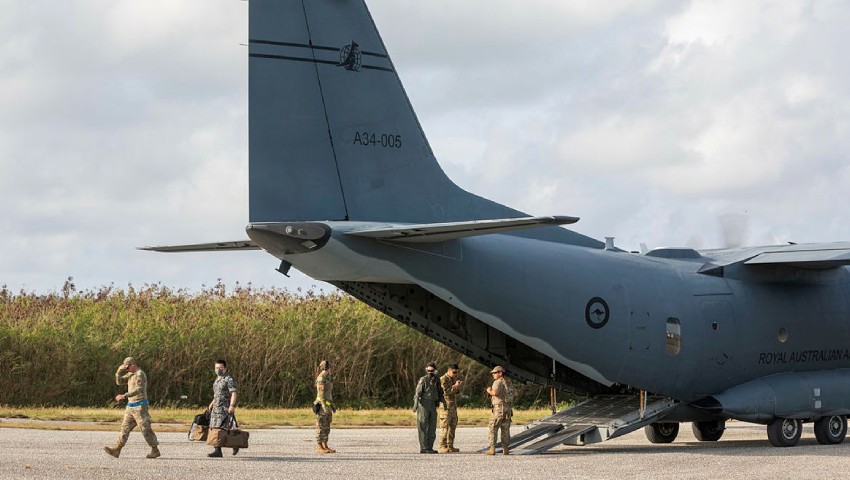The multi-national interoperability exercise has concluded following weeks of intensive training.
The Royal Australian Air Force (RAAF), the US Air Force, and the Japan Air Self-Defense Force (Koku-Jieitai) have completed two weeks of interoperability training as part of Exercise Cope North 22.
Held in Guam and the Commonwealth of Northern Mariana Islands, the counterparts engaged in a range of drills aimed at enhancing their collective humanitarian assistance and disaster relief (HADR) capabilities.
This involved scripted scenarios simulating a HADR response to a typhoon or an escalating threat environment.
Exercise control director, Wing Commander Elizabeth Beston, said the forces ensured the exercise was safe, while also seeking to strengthen interoperability of the combined contingency response squadron.
“The focus was not necessarily on tactical outcomes, but rather the ability to learn and share knowledge,” she said.
“The Cope North scenario this year allowed for a unique opportunity to practise and exercise the rules of engagement of all three nations beyond a permissive environment, which has been the most significant variation from previous years.
“Through the exercise training objective, we enhance as a more operationally focused integrated contingency force.”
RAAF led the combined contingency response squadron, working with USAF and Koku-Jieitai counterparts to respond to the scenario via a tri-lateral command and control structure.
This involved combining the tactics, techniques and procedures of air base activation and operations in a multi-national environment.
“Not unlike real-time scenarios, there were a number of complexities around the tactical integration of air movements between the tri-lateral services that required collaborative solutions," Wing Commander Beston added.
“The interoperability this created cannot be artificially scripted, it's the organic interactions of a multi-national command structure that creates a unique and valuable learning opportunity.
“Forging and creating relationships, as well as learning from our partners and the way they do business is essential to ensuring success on operations, so the chance to practise social mastery skills on an exercise such as Cope North cannot be understated."
The RAAF contingent included E-7A Wedgetail, C-27J Spartan, KC-30A multi role tanker transport and F-35A Lightning II aircraft, which were deployed alongside a contingency response squadron focused on HADR training.
The conclusion of Exercise Cope North 22 comes as Royal Australian Navy personnel of HMAS Arunta prepare for an Indo-Pacific regional peace deployment.
The crew engaged in individual and collective training activities while travelling up Australia’s eastern seaboard.
This included routine maintenance exercises honing small-arms safety skills, participating in flight-deck operations with embarked MH-60R Seahawk helicopters, and completing whole-of-ship damage-control exercises.
Tasks included integrating the embarked flight, which involved the aircraft, aircrew and maintenance team, and the ship’s flight-deck operations’ team, as well as naval gunnery and anti-submarine warfare.
Following the training exercises, HMAS Arunta completed a routine logistics port visit in Darwin before departing for the regional peace deployment, aimed at supporting Australia’s contribution to preserving security and stability in the Indo-Pacific.
This marks the first regional presence deployment for 2022, expected to bolster interoperability with partners in the south-east Asia and north-east Indian Ocean regions.








